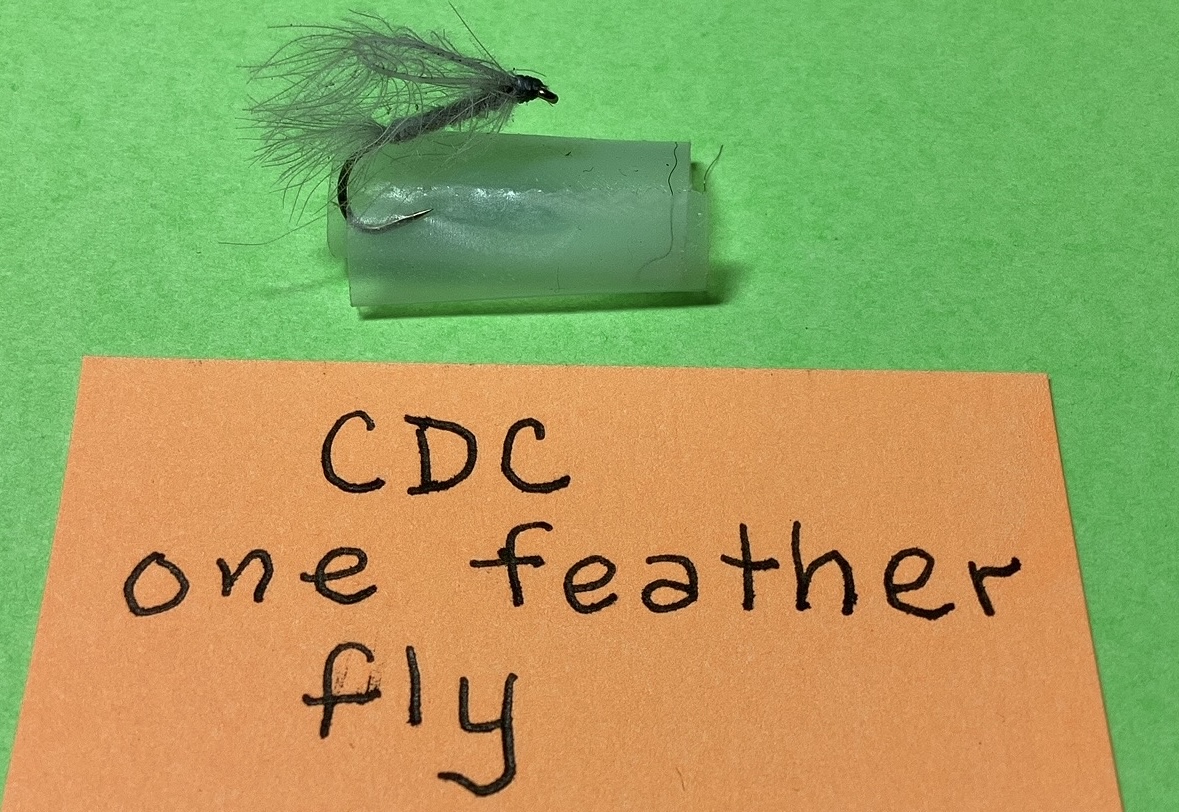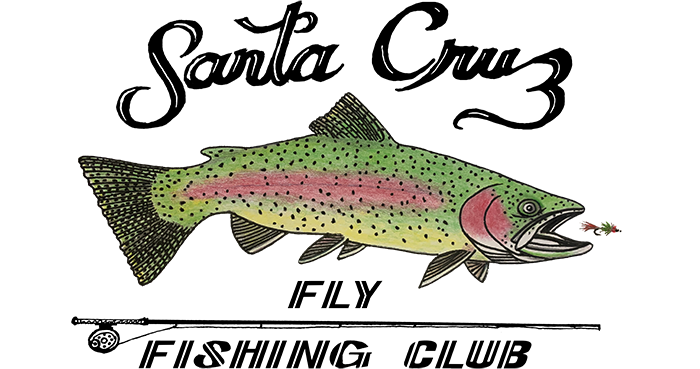
CDC stands for cul-de-canard which is the butt feather of a duck. It has some interesting properties that will help the fly float without gel floatant. In fact gel floatant actually mashes down the barbs making the fly not float. Instead dress with a dry powdered floatsnt like Frog Fanny. When it becomes waterlogged, squeeze dry on clothing or a chamois. Then brush more Frog Fanny into the fibers. Don’t be concerned with the white fluffy appearance for it doesn’t seem to deter the fish at all.
HOOK: TMC 200 size 24-20. crimp Barb. Note: length of CDC feather will determine size of hook. See shuck below.
THREAD: 8/0 Color to match CDC NOTE: mayflies come in many colors. Some of the more common are gray, olive, tan, brown and cream. Attach thread behind eye. Wrap to above hook point with touching wraps.
SHUCK; CDC feather. Measure length of feather along stem were barbs protrude. Select a feather that is at least as long as the following as in the following chart. Longer is even better.
One and 3/4” for 14 hooks.
One and 1/2” for 16 hooks
One and 1/4” for 18 hooks
One inch for 20 hooks.
Stroke barbs toward tip of feather. Tie in on top of shank, tips hook length beyond thread, with three wraps. Carefully pull feather forward until shuck equals shank length. Lift butt and, wrapped thread to eye.
BODY: continuing with the same feather as above. Spiral wrap feather forward covering shank. Tie off with 2 wraps between barbs.
WING: using same feather as above, hold stem upright, stroke barbs backward. Make a loop with stem that extends to shuck. Tie off securely add eye. Cut excess. NOTE; loop will probably lean. Wrap thread head. Whip finish, cut thread. Do not use head cement or any glue. Stroke barbs backward. Cut them short at end of shuck.
Posted on March 29th, 2022
